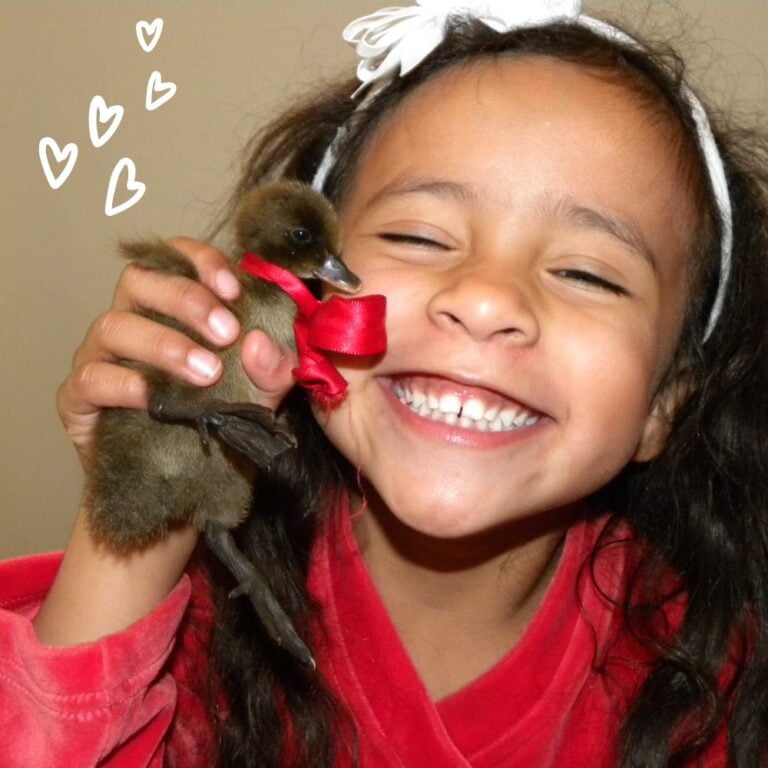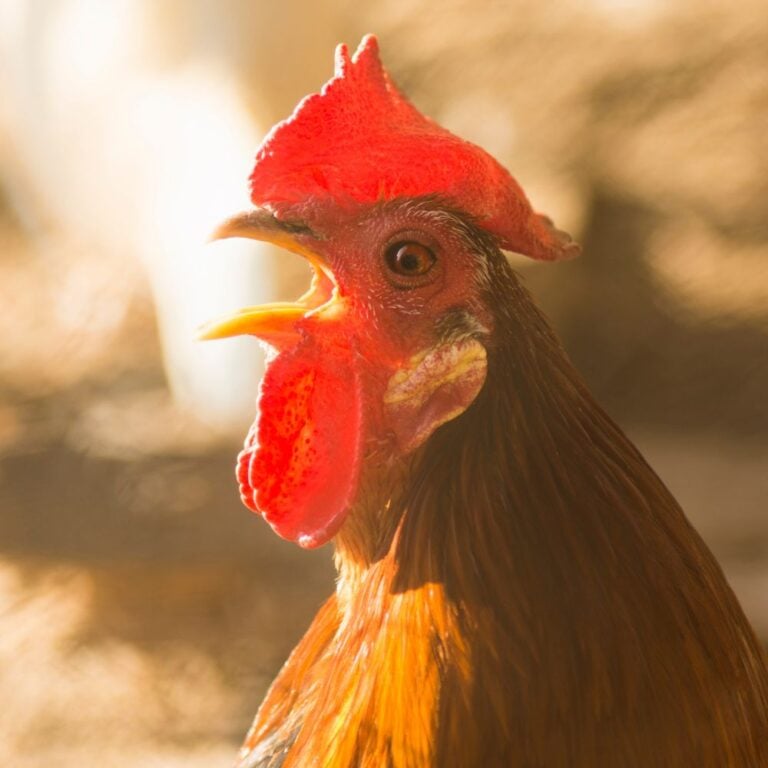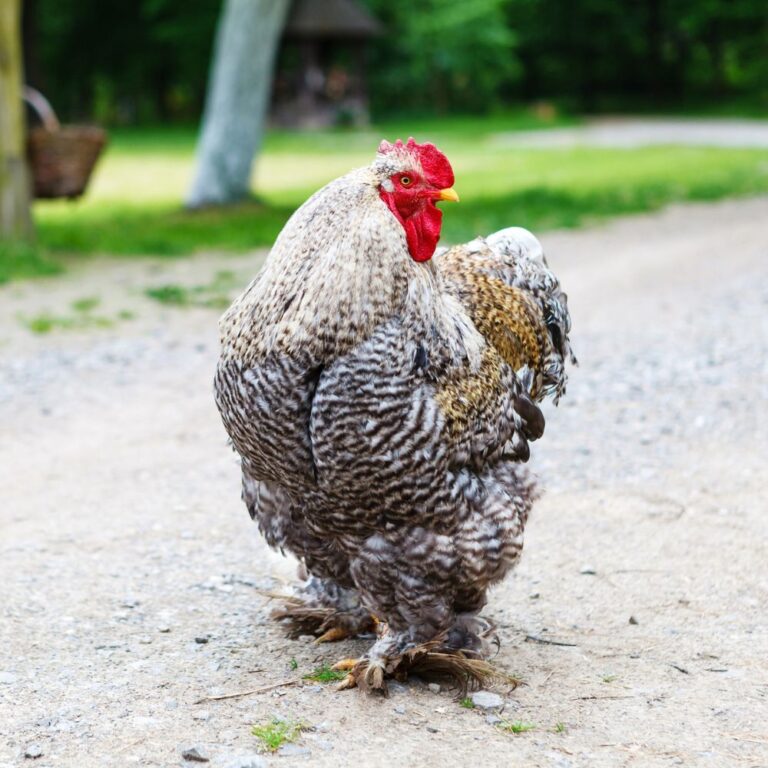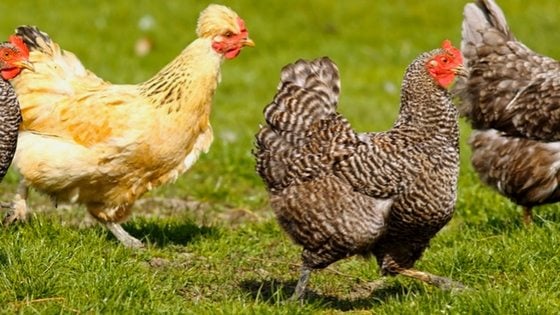Magpie ducks are dapper and delightful birds with tuxedos to match. They’re the James Bond of the duck world, charming and sophisticated with a flair for intrigue.
These birds have a friendly personalities and make great companions, but don’t let their good looks fool you – they’re also top-notch egg layers. So whether you’re looking for a new addition to your flock or just a suave and stylish feathered friend, the magpie duck is sure to fit the bill.

Table of Contents (Quickly Jump To Information)
History of Magpie Ducks
Magpie ducks are a breed of domesticated duck with distinctive black and white plumage, docile temperaments, and excellent egg-laying abilities. The breed was developed by Oliver Drake and M. C. Gower-Williams of Wales who crossed breeds such as the Ancona and the White Runner in the early 1800s. There are some varying opinions on the breeds used to develop the Magpie, but wherever the chips fall – it’s a winning combination.
Magpie ducks gained popularity for their unique appearance, gentle nature, and good egg-laying abilities. They were exported to the United States in the 1930s and continued to be bred despite a decline in popularity during World War II. They were fully recognized by the American Poultry Association in 1977.
Today, magpie ducks are experiencing a resurgence in popularity due to the rise of the backyard poultry movement. They are a favored breed among backyard duck keepers and hobby farmers worldwide.
Magpie Duck Appearance
The Magpie duck is a dapper bird, looking as if it’s dressed in a tuxedo ready for a night on the town. Its black and white plumage pattern is much like a penguin suit, with a stylish white bib and collar that make the sharp black tailcoat stand out.
It has a mixture of white and black feather colors, usually with wings and tail feathers predominately black. It has orange feet that stick out as it waddles around.
Its long neck and upright carriage provides for a proud stance that gives it a confident look. The crown of the head is black much like a cap or a top hat. Its beak is yellow or orange and its eyes are dark.
Overall, it’s an adorable duck with a striking appearance. They are certainly fun to watch at a pond or on a farm (or, of course, at a high-profile dinner 😉).
The Personality of Magpie Ducks
The Magpie duck may look like it’s dressed for a fancy dinner party, but don’t let its formal attire lead you to think it’s a stuffy snob bird – this duck knows how to have a good time! With a friendly and outgoing personality, the Magpie duck is always up for frolicking around with friends (human or feathered).
In fact, it’s been known to follow its favorite human around like a loyal puppy, quacking affectionately and seeking attention.
In addition to its other traits, this duck has curiosity, often exploring new places with its comical waddle and its head held high. It’s not afraid to get its feet wet, either – the Magpie duck is an enthusiastic swimmer, splashing and diving with reckless abandon. Ducks do love water after all.
The Magpie duck is a feathered friend you’ll be glad to have around. However, as with all ducks, this breed can be skittish and get spooked. If you raise them from birth and spend a lot of time with them, they will be less skittish than otherwise.
Magpie Duck Egg Production
Magpie hens are good layers and duck eggs are something you simply must try (if you haven’t already). Duck eggs are of gourmet quality (just ask a French chef if you don’t believe me).
They are reliable and consistent layers, producing an average of 220-290 eggs per year. The egg size is medium to large with a white or cream-colored shell.
Ducks of this breed begin laying eggs at around 5-6 months of age and continue to lay throughout the spring and summer months. They may slow down or stop laying during the winter months, especially if they are not provided with enough light or warmth.
Another factor that greatly affects egg laying is the quality of feed and treats. Nutrition matters so be sure to check the ingredients.
What Kinds of Pests Do Magpie Ducks Eat?
The Magpie duck breed is known for active foraging and will eat a variety of insects and bugs that they come across while waddling around a farm or backyard. Some of the most common insects and bugs that Magpie ducks eat include:
- Snails and Slugs- Magpie ducks are known for their love of snails and slugs. These are great sources of protein and are also high in calcium.
- Grasshoppers and Crickets – They enjoy chasing after and eating grasshoppers and crickets, which are high in protein and other essential nutrients.
- Beetles and Caterpillars – Ducks will also eat beetles and caterpillars, which are often found on plants and trees.
- Ants and Termites – This breed is also known to eat ants and termites, which are high in protein and minerals.
- Mosquitoes and Other Flying Insects – Magpie ducks will eat mosquitoes and other flying insects.
- Aquatic life – Perhaps these are not insects, but they are worth mentioning. Magpie’s enjoy things like small fish, tadpoles, and other creepy crawlie water dwellers.
It’s important to note that while Magpie ducks enjoy eating insects, they still require a balanced diet. Be sure they have high-quality feed, plus other sources of nutrition.
What Kind of Plants Do Magpie Ducks Eat?
The Magpie breed, like other ducks, are omnivores, which means that they eat a wide variety of foods, including grasses, weeds, and wild greens. Here are some examples of these greens that Magpie ducks may enjoy eating:
- Dandelions
- Clover
- Chickweed
- Plantain
- Timothy grass
- Orchard grass
How to Care for Magpie Ducks
- Shelter- Provide your Magpie with a clean and dry duck house. It can be a chicken coop, a shed, or even a dog house. It just needs to get out of the elements and nest. The shelter should be well-ventilated and protected from predators.
- Food – Feed your Magpie duck a balanced diet of high-quality feed or a mix of grains, greens, and insects. You might need to add brewers yeast to the feed if you can’t find duck feed (ducks have different dietary needs). Friendly warning: waterfowl feed cannot be found at every feed store, so plan ahead.
- Water – Provide fresh and clean water at all times (they need constant access). Believe it or not they go through gallons of water each day.
- Checkup – Magpie ducks are relatively low-maintenance birds, but they should be checked for any signs of injury or illness on a regular basis.
- Grooming – If you want your duck to be extra friendly and used to handling you can groom them by cleaning their feathers and beak with a damp cloth. You can also trim their wings if necessary to prevent them from flying away.
- Exercise – Magpie ducks are active and social birds that enjoy swimming and waddling around. Allow them to free range in a safe outdoor space, or provide them with a small pool or a pond for swimming.
- Mess – It’s important to note that ducks are excellent at making messes. They do their business everywhere and they will spread water further than you think possible (from their water source). Ducks are amazing pets, but you have to know the good and the bad. So now you know.
By following these basic care guidelines, you can ensure that your Magpie duck stays healthy and happy.
Summary
Raising ducks can be super fun and satisfying, just like raising chickens. Trying new breeds, like the fancy schmancy Magpie is even more fun, especially for beginners.
Duck keepers around the world will tell you that ducks can be addictive. Just be sure you have the proper space and resources to care for them.
Other Duck Resources
- Khaki Campbell Ducks – An Amazing Duck Breed You Will Love
- Mallard Ducks – Must Know Facts
- Cayuga Duck – Ultra Cool Duck Breed
- Pet Ducks – Good or Bad Idea?
- Pekin Duck – The Most Popular Duck of All
- How Long Do Ducks Live? Top Pet Breeds
- Indian Runner Ducks 101
- Call Ducks – Adorable, Miniature, Irresistible

A happy wife, mother, teacher, writer, hobby farmer, lover of chickens, and contributor to Pampered Chicken Mama!




![3 Shockingly Common Myths About Feeding Chickens That Prevent YOU From Being Healthier [Podcast]](https://thefrugalchicken.com/wp-content/uploads/2016/06/common-misconceptions-about-feeding-chickens-feature-min.jpg)

